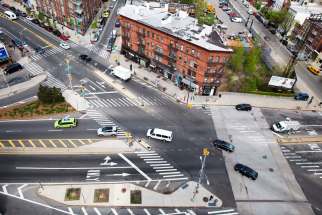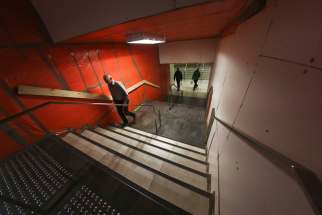Little road noise on the campaign trail Although poll shows four of 10 Winnipeggers are less comfortable driving, riding and walking than they were a decade ago, there has been little talk of road safety in the civic election
Read this article for free:
or
Already have an account? Log in here »
To continue reading, please subscribe:
Monthly Digital Subscription
$0 for the first 4 weeks*
- Enjoy unlimited reading on winnipegfreepress.com
- Read the E-Edition, our digital replica newspaper
- Access News Break, our award-winning app
- Play interactive puzzles
*No charge for 4 weeks then price increases to the regular rate of $19.00 plus GST every four weeks. Offer available to new and qualified returning subscribers only. Cancel any time.
Monthly Digital Subscription
$4.75/week*
- Enjoy unlimited reading on winnipegfreepress.com
- Read the E-Edition, our digital replica newspaper
- Access News Break, our award-winning app
- Play interactive puzzles
*Billed as $19 plus GST every four weeks. Cancel any time.
To continue reading, please subscribe:
Add Free Press access to your Brandon Sun subscription for only an additional
$1 for the first 4 weeks*
*Your next subscription payment will increase by $1.00 and you will be charged $16.99 plus GST for four weeks. After four weeks, your payment will increase to $23.99 plus GST every four weeks.
Read unlimited articles for free today:
or
Already have an account? Log in here »
Hey there, time traveller!
This article was published 19/10/2018 (2612 days ago), so information in it may no longer be current.
It was a normal July morning, and Oahn Pham was on her way to work.
She wasn’t behind a steering wheel, nor was she pedalling down Logan Avenue on a 10-speed. Pham was walking from her home in Winnipeg’s West End, where she lived with her young daughter, to start her day at Siloam Mission; the 33 year old worked part time in the volunteer services department.
Pham started working at Siloam less than a year earlier, and guests and co-workers were quickly drawn to her, a woman with a massive personality that belied her tiny frame. She approached her work with enthusiasm and compassion.
And she had no reason to think July 30, 2015 would be any different.
But Pham didn’t make it to work that day.
Road safety poll
A Free Press-CTV Probe poll looked whether Winnipeggers feel safe on the road.
Of the 653 respondents, four out of 10 adults insist they feel less safe than they did a decade ago from the risk of getting into an collision while travelling on city streets. While 44 per cent of respondents said they felt the same with regard to personal safety, only 16 per cent said they felt safer than they did in 2008.
The results were consistent across Winnipeg’s five regions; in every corner of the city respondents were more likely to feel less safe than they did previously.
A Free Press-CTV Probe poll looked whether Winnipeggers feel safe on the road.
Of the 653 respondents, four out of 10 adults insist they feel less safe than they did a decade ago from the risk of getting into an collision while travelling on city streets. While 44 per cent of respondents said they felt the same with regard to personal safety, only 16 per cent said they felt safer than they did in 2008.
The results were consistent across Winnipeg’s five regions; in every corner of the city respondents were more likely to feel less safe than they did previously.
“It’s almost a three-to-one margin of people who feel less safe now than safer,” says Probe Research President Scott MacKay. “As for reasons for this, we would only be speculating, and we’d have to have asked additional followup questions. Maybe we will do that in the future.”
Women, older residents and those with lower household incomes were found to be more likely to report that they felt more at risk of injury on city streets than 10 years ago. Younger adults and residents of the core were found to be almost equally as likely to say safety has improved as they were to say it had worsened.
MacKay did speculate that perceived risk may have increased proportionally as more cars were added to Winnipeg’s roads, creating a sense of compression for pedestrians. In 2009, there were 388,660 passenger vehicles and light trucks on Winnipeg’s streets, according to MPI. In 2018, that number had increased to 454,621, a 14.5 per cent increase.
As household income climbed, the percentage of respondents who felt less safe decreased. As respondent age increased, the likelihood of feeling less safe did, proportionally.
Question
Safety Perceptions: Now, thinking about the safety of the streets and roads here in Winnipeg when it comes to things like the risks of traffic accidents and the like, and regardless of whether you are a driver, pedestrian or cyclist… Compared to, say, 10 years ago or so — do you personally feel safer now on Winnipeg’s streets and roads, less safe now or about the same?
Methodology
Between Sept. 19-28, Probe Research surveyed a random and representative sampling of 653 adults living in Winnipeg. With that sample, there is a 95 per cent certainty that the results are within +/- 3.8 percentage points of what they would’ve been had the entire adult population been surveyed. Modified random digit dialing, including both landline and wireless numbers, ensured all Winnipeg adults had an equal opportunity to participate. Minor statistical weighting was applied to the sample to ensure that age and gender characteristics properly reflected the city’s population.
“The truck was turning north,” Gabriela Agüero, a friend and artistic collaborator says, looking at a newspaper clipping from that day. “It struck and killed her.”
They hadn’t known each other long, but were working together on a community art initiative. Agüero was quickly drawn in by Pham’s larger-than-life personality. Agüero’s heart dropped when she picked up the phone; they were supposed to get together the next day.
It seemed unbelievable — someone so young and dynamic vanishing in an instant, but it always does when someone dies in a collision.
“Every time someone is injured or dies, hundreds of people are affected by that death,” Agüero says. “It creates waves of suffering.”
Agüero is a firm believer in a concept called Vision Zero, a holistic approach to urban infrastructure and planning that aims to eliminate road fatalities and injuries with fail-safe design solutions and policies, such as lower speed limits, protective infrastructure, vehicle safeguards and improved pedestrian walkways.
She knows nothing can bring her friend back, but believes that better, earlier implementation of Vision Zero ideals might have ensured that her friend got to work safe and sound that day.
While other cities in North America — namely New York and Seattle — have undertaken policy initiatives aimed at achieving zero road fatalities with varying levels of success, Winnipeg’s adoption of the idea has been considerably slower, and road safety has barely registered a blip on this year’s civic-election campaign trail, compared to other hot-button topics.
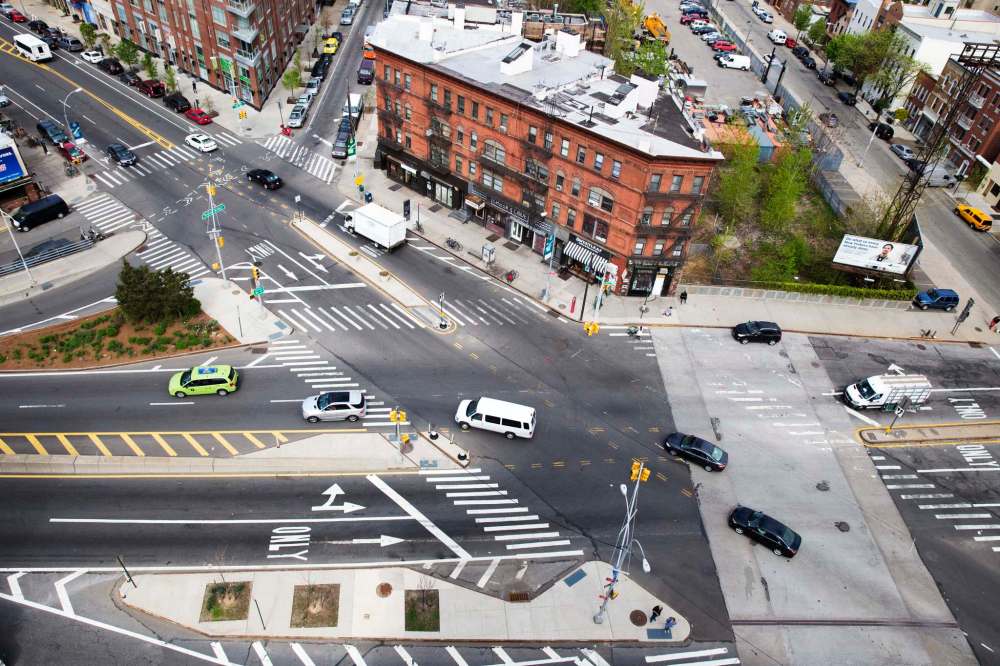
Mayor Brian Bowman tells the Free Press he hasn’t discussed Vision Zero — or Toward Zero as the city refers to it — much during his campaign because it’s something the government has already been working to implement.
“In the last four years I fought for it, and I remain committed to implementing the 20-year Active Transportation Plan (we instituted),” he says.
In January, the city received a road-safety strategy with zero fatalities in mind from the standing policy committee on infrastructure renewal and public works. However, the recommendation was to receive the report as information, with no direct policy implications.
According to a city spokesperson, the city is “currently working on several strategies for road-safety incorporating the “Vision Zero” framework,” and “it would be premature to provide any details at this time as the strategies are still in the process of development.”
When asked how Vision Zero has been implemented, Bowman points to the city’s downtown protected bike-lane grid, and its co-operation with Manitoba Public Insurance to initiate a Toward Zero plan along with pedestrian cycling strategies.
“I think we’ve been moving in the right direction,” he says.
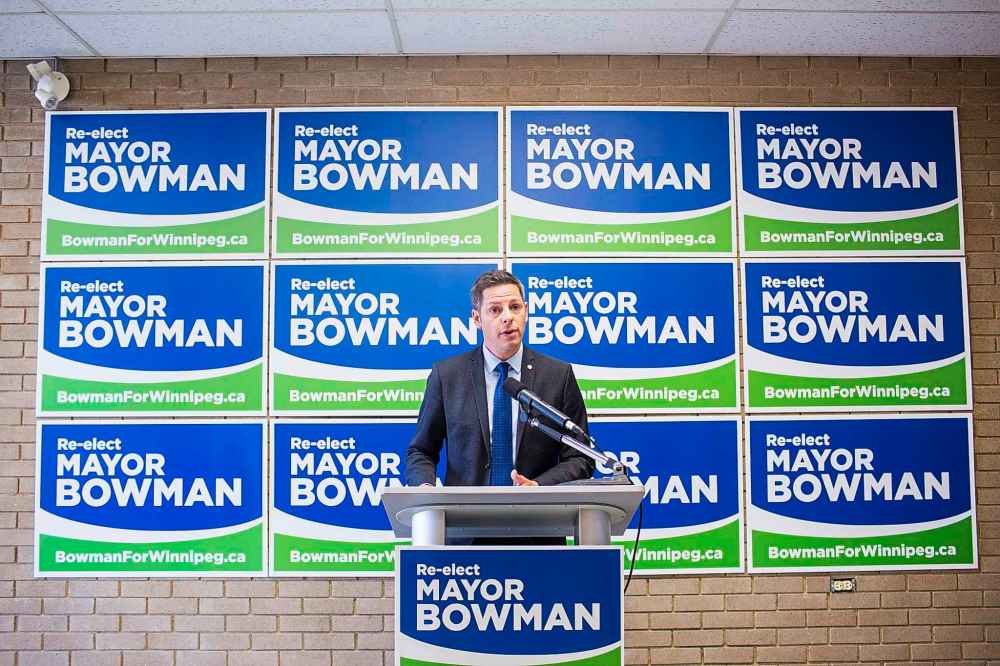
Winnipeggers, however, don’t feel much safer on roads than they did before, results from a recent survey reveal.
A Probe Research poll on road safety commissioned by the Free Press and CTV Winnipeg found 40 per cent of the city’s residents felt less safe from risk on streets in 2018 than they did 10 years ago. Comparatively, only 16 per cent of respondents said they felt safer, while the remainder (44 per cent) felt about the same.
There were 49 fatal collisions in Winnipeg between 2012 and 2015 and 202 collisions resulting in major injuries, the city road-safety report said. MPI data show an average of 5.9 pedestrians have died in the city each year since 2000, a figure that decreases to 4.8 when accounting only for the last five years.
Though she believes Winnipeg’s road safety has improved overall over the past two decades — as evidenced by a decrease in fatalities relative to population size — Morr Transportation Consulting CEO Jeannette Montufar says the suggestion that Vision Zero has been implemented is a long way from the truth.
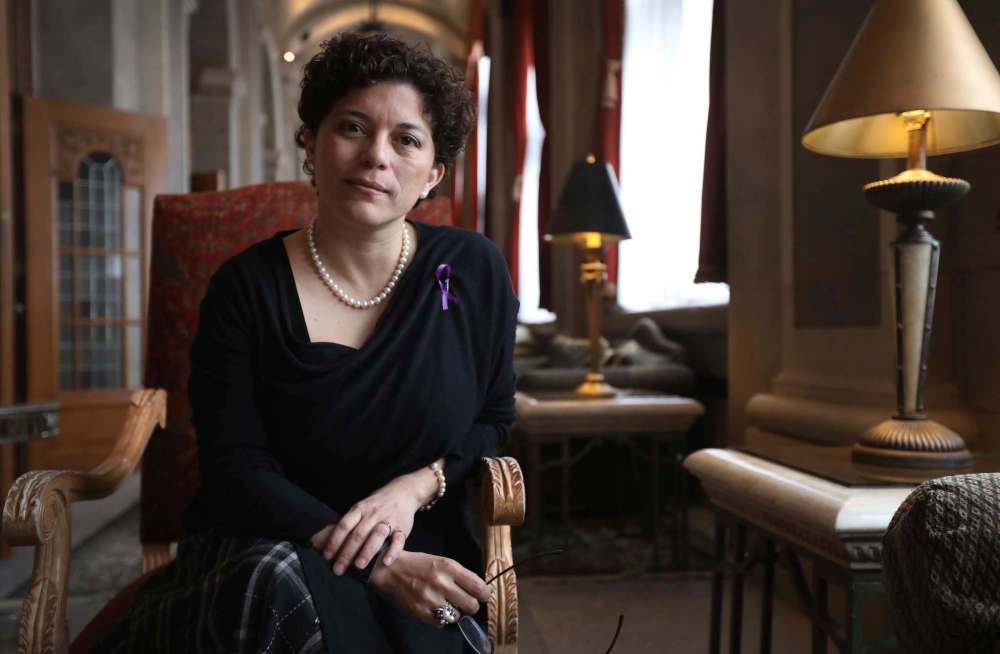
While certain positive developments from the city’s engineers in the transportation department have improved road safety — breakaway bases on traffic poles, innovative traffic-signal design, safety curbs on streets — Montufar said those are only pieces of the puzzle, not a complete strategy.
“The issue is making it network-wide,” she says, and in order to do that, political will is needed. It seems road safety has been neglected in this election cycle despite its obvious value.
“It’s no different from any other elections,” she says. “Road safety doesn’t really get onto the radar screen. Unfortunately, people think (collisions) will never happen to them, but road-related collisions are the leading cause of death for Manitobans between four and 30 years old.
“There are other things on the mind of people running that they may find more important.”
Sherri Rollins, the chair of Winnipeg School Division and a candidate for the council seat in Fort Rouge-East Fort Garry, has made road safety a cornerstone of her campaign, calling it “a burning issue in this ward.”
“I think we have an opportunity to catch up and do it better than other cities,” she says. “It’s heartbreaking it hasn’t been treated as an important issue in this election.”
Rollins said policy on road safety has generally been reactive, rather than proactive, as Vision Zero prescribes. A key example is the intersection near Varennes School, where a young boy was killed last winter. Six years earlier, St. Vital Coun. Brian Mayes asked the city to consider installing a traffic light at the pedestrian crosswalk. After the eight-year-old boy’s death, the city extended the hours of crossing guards, trimmed obtrusive trees, and installed eye-level lights at the crosswalk to increase pedestrian visibility.
“Despite claims of achieving Vision Zero, it’s easy to disprove” by looking at the number of fatalities– Antonio Gomez-Palacio
“That accident really affected a lot of people who wanted me to do something,” Mayes says. “So we took action. Hopefully, we can try to put those (lights) elsewhere in St. Vital.”
Antonio Gomez-Palacio, an urban-planning and design expert at Dialog, a multidisciplinary urban-works firm, said that while safety improvements are obviously positive, too often they’re implemented in the aftermath of a tragedy, rather than integrated Vision Zero strategies.
“When you pin down a councillor, they know what they’re supposed to do,” Gomez-Palacio says. “They know this is exactly what they should be doing. The trick is holding (politicians) accountable.”
“Despite claims of achieving Vision Zero, it’s easy to disprove” by looking at the number of fatalities, he says.
Coun. Janice Lukes, whose motion led to the city’s road-safety strategy, says the city hasn’t done enough regarding Vision Zero. She says the idea requires collaboration among engineers, educators and health-care and transportation experts, among others, but “everyone is working in silos.”
“We need a guiding document for the city to identify our goals, and we have to do that as a team — we are nowhere near that,” says Lukes, who has endorsed candidate Jenny Motkaluk for mayor and has been acclaimed for a second term as Waverley West’s councillor.
“There’s no political will from the mayor or the executive policy committee to push this forward. It’s just basking in limbo. I know I’ll be back [on council] so I’m definitely going to be cranking (Vision Zero) up again.”
The evidence of Vision Zero thinking does illustrate a clear improvement of road safety in many cases. Before New York City implemented its plan in 2014, traffic fatalities and pedestrian deaths were disturbingly high. In 2017, Mayor Bill de Blasio announced a $1.6-billion commitment to improve road-safety initiatives such as widening sidewalks, installing new crosswalks and implementing improved pedestrian medians.
Along with infrastructure improvements, New York has also begun to implement 25 m.p.h. (40 km/h) speed limits. And the results have spoken for themselves: since Vision Zero began in the city, traffic fatalities have decreased by 28 per cent and pedestrian fatalities have dropped by 45 per cent.
In the Winnipeg mayoral race, Bowman said his plan regarding Vision Zero is to continue along with the upgrades the city already reportedly has underway, while Motkaluk, Bowman’s primary opponent, did not respond to a request for comment.
•••
Jessica Ehlers wasn’t at work the day Oanh Pham died, but she remembers getting the phone call.
“I still think about it all the time,” says Ehlers, the volunteer-services department manager at Siloam.
Ehlers often walks to work, but for two years after the fatal collision, she went out of her way to avoid the spot where Pham was hit.
“I walk down that part of the street now, but I think about her every time,” she says.
The traffic on Princess Avenue in front of the shelter often zips by, and Ehlers says it’s something she worries about frequently. Since Pham’s death, when co-workers think they’ll be late, they’ve made sure to text or call to let each other know, lest anyone worry.
She says some improvements have been made to the roads nearby — a crosswalk, updated signage — but still, the crash looms large, and the spot remains a marker of a life cut to a tragic end.
“Walking down the street, I’m doing exactly what she was doing,” says Ehlers. “It’s a reminder of a horrible thing. It’s not a relaxing walk.”

Ben Waldman covers a little bit of everything for the Free Press.
Our newsroom depends on a growing audience of readers to power our journalism. If you are not a paid reader, please consider becoming a subscriber.
Our newsroom depends on its audience of readers to power our journalism. Thank you for your support.
History
Updated on Saturday, October 20, 2018 10:30 AM CDT: Typos fixed.



